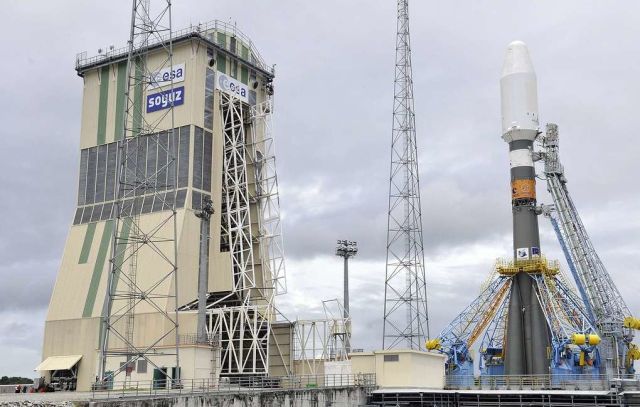Paris. December 5th. INTERFAX - The Russian Soyuz-ST-B launch vehicle, launched on Sunday from the Kourou cosmodrome in French Guiana, successfully put two satellites of the European global navigation system Galileo into orbit, the launch operator Arianespace said.
"The separation of two Galileo satellites (from the Fregat upper stage) has been confirmed. Our passengers have been delivered to the specified orbit!" - Stefan Israel, CEO of the French company Arianespace, wrote on Twitter.
As part of the VS26 mission, the launch of the Soyuz-ST-B launch vehicle with the Fregat upper stage and the Galileo-FOC FM23 and Galileo-FOC FM24 spacecraft was carried out at 01:19 Paris time (03:19 Moscow time) from the launch pad of the Guiana Space Center in South America.
Approximately 3 hours and 52 minutes after the launch, the satellites were launched into orbit at a height of 39 thousand km using the Fregat upper stage. The total payload mass of the rocket was 1,645 kg.
The Galileo European global satellite navigation system, which is being created with a budget of more than 10 billion euros, is designed to provide high-precision positioning, navigation and time determination services to more than 2.3 billion users worldwide. It provides real-time positioning accuracy up to a meter. The deployment of the Galileo orbital constellation, which began in 2016, is carried out in parallel with the American GPS global positioning system, the Russian GLONASS and the Chinese Beidou.
The Galileo spacecraft were developed by EADS Astrium by order of the European Space Agency (ESA). Currently, there are 22 active Galileo spacecraft in orbit.
The launch of the Soyuz-ST-B carrier was carried out within the framework of an international project of the state corporation Roscosmos, ESA and the National Space Research Center of France (CNES). The first launch of the Russian Soyuz rocket from the Kourou cosmodrome took place on October 21, 2011. Over the past 10 years, 25 launches have been carried out from there.

